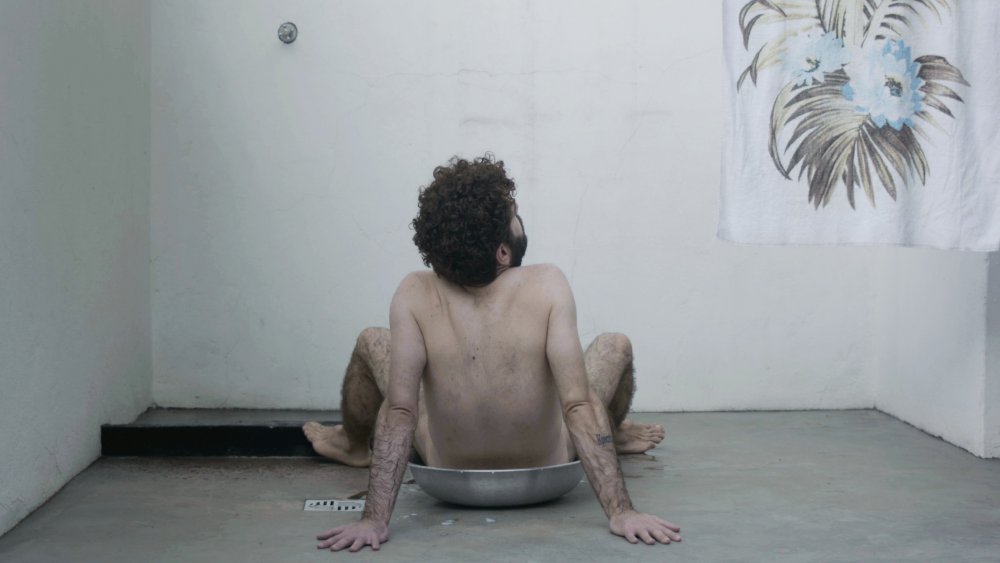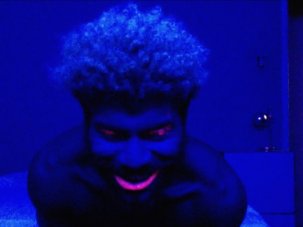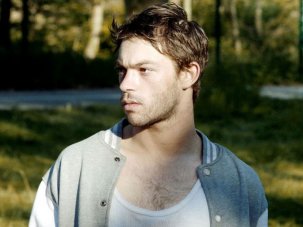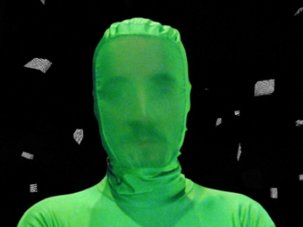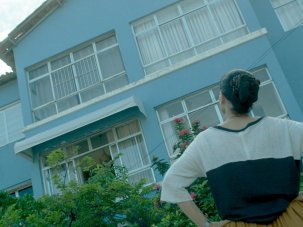“The asshole needs to be urgently introduced into the social and political realm,” reads the closing line of Gustavo Vinagre and Rodrigo Carneiro’s directors’ statement regarding The Blue Flower of Novalis. And indeed, the film opens with an extreme closeup of said sociopolitical asset. Framed at a disorienting angle, gently swelling and contracting as if it were breathing, it makes for a curious, almost endearing sight. Lines of verse are then recited from off-screen and after a few seconds the film cuts to a full shot of a naked man contorted in the yoga plough pose, reading from a collection of Hilda Hilst poems with his ass pointing to the heavens.
Brazil 2019
70 mins
Directors Gustavo Vinagre, Rodrigo Carneiro
Cast
Himself Marcelo Diorio
Those tickled by such bawdy juxtapositions will have a terrific time for the remaining 70 or so minutes. Vinagre’s previous feature, I Remember the Crows (2018), which Carneiro produced, was also a portrait film that self-consciously harkened back to Shirley Clarke’s Portrait of Jason (1967). Though Vinagre thematised the exoticism inherent in such portraiture, he ultimately had to concede his inability to fully transcend this problematic as a cis man making a documentary about a transgender woman. The Blue Flower of Novalis takes a more explicitly critical stance towards its vérité roots, all the while attempting to redeem the tradition through an effort at flattening the power imbalance between director(s) and subject.
Integral to this endeavour is the collaboration of the man exposing himself to the camera. That Marcelo, the poetry-reading yogi, is a co-author of the film is signalled from the outset, when in an early scene he directs the camera to come closer because he doesn’t want to shout across the room. Like virtually everything else in The Blue Flower of Novalis, it’s left open whether this is staged or spontaneous, though the careful framing and blocking of the shots, some of which involve relatively intricate manoeuvring, suggest that precious little in the film happened off the cuff.
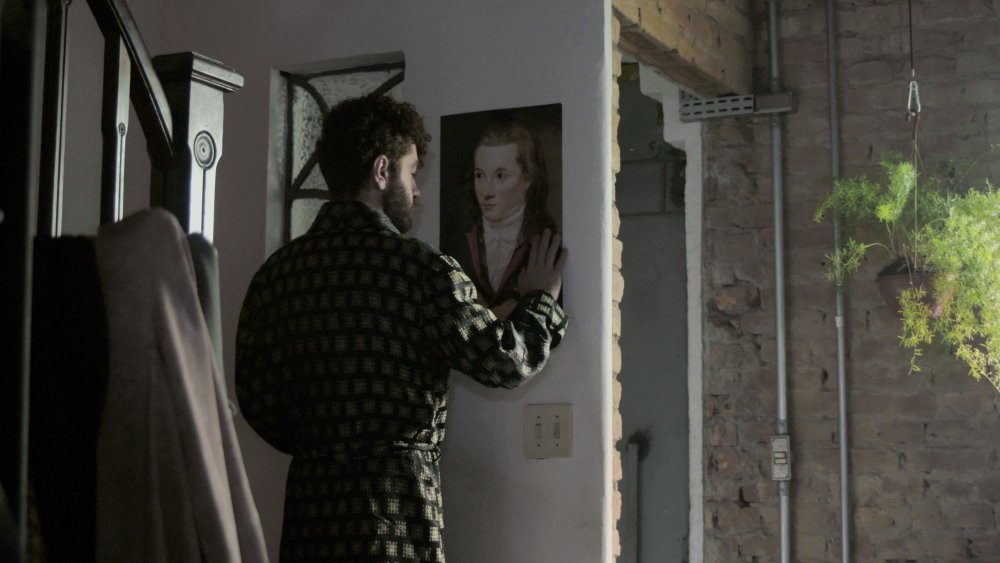
Marcelo Diorio in The Blue Flower of Novalis
And then there are moments that completely depart from reality, as when Marcelo recounts his brother’s death and the camera pans left to reveal a funeral happening on the other side of his apartment, with four grieving family members gathered around the brother’s casket. Marcelo joins them and, with his voice digitally made to reverberate as if he were speaking inside a church, confesses that in their youth he and his brother had an incestuous relationship. When the film then abruptly cuts to him sitting exactly as he was before the camera panned to the funeral, implying that the scene played out in Marcelo’s head, we’re again left unsure of how much of this shocking revelation was genuine and how much was just part of a performance.
The distanciation produced by all these layers of artifice serves to protect Marcelo and it gradually transpires that he has long adopted performing as a means of survival in real life as well. Extremely erudite, he takes inspiration and solace from his many cultural idols – Hilst, Novalis, Georges Bataille, Nina Simone, Maria Callas, Franz Kafka – to deal with the intolerance he endures as a queer HIV-positive man who grew up in a virulently homophobic family. By granting Marcelo a level of mastery over his own narrative, the film avoids both downplaying his suffering and rendering him as a victim. When he gleefully relates his wish to emulate Kafka’s Letter to His Father by sending his own father videos of his hook-ups – having just finished enumerating his many colourful sexual proclivities – the idea is at once poignant and hilarious.
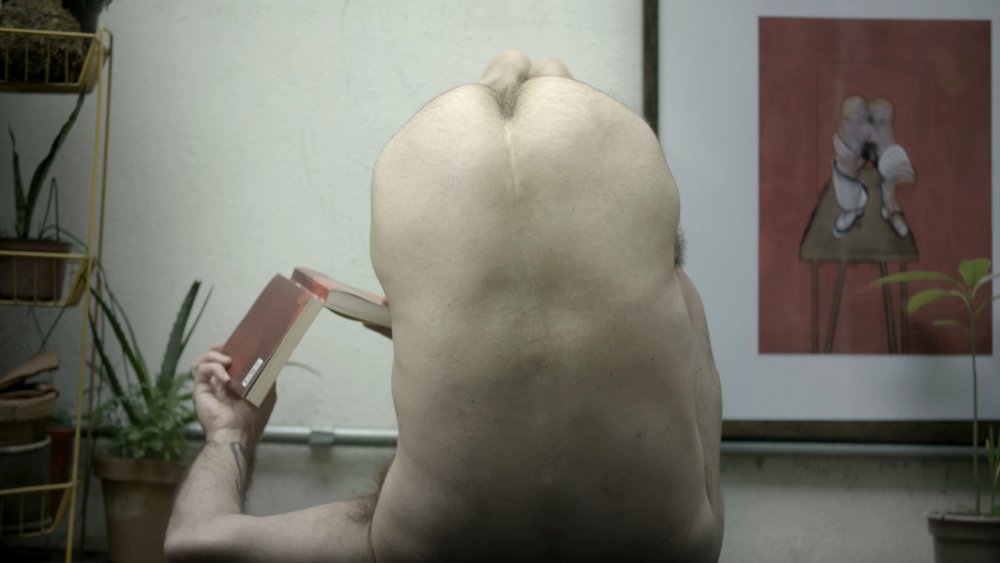
Marcelo Diorio in The Blue Flower of Novalis
Such humour plays a central role and Vinagre and Carneiro come up with many inventive ways of complementing Marcelo’s exuberantly ribald chronicle, including a mid-coital interview, an attempt at sodomy-via-zoom, and a closing image that will likely remain forever seared in every viewer’s mind. The latter won’t be spoiled here; suffice it to say that the bookend it creates with the opening shot offers an illustration of the invasive nature of cinéma vérité that is as outrageous as it is forceful.
-
The Digital Edition and Archive quick link
Log in here to your digital edition and archive subscription, take a look at the packages on offer and buy a subscription.




